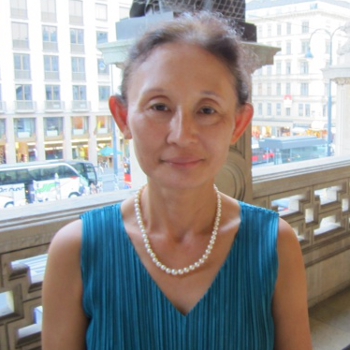Halfway through the second act of Lohengrin in Dresden, as Anna Netrebko began to sing Elsa’s “Euch Lüften, die mein Klagen” this seasoned and somewhat jaded operagoer felt her eyes moisten with tears; tears of joy and gratitude. It has been a long time since the sheer beauty of a voice touched me so deeply. Essaying her first Wagner heroine, Netrebko not only brought her rich and sonorous soprano to sing Elsa with full-throated and clear brightness, but she also shaded her voice to sing softly. She executed ornamentations skillfully; her legato soared luxuriously; high notes were effortlessly exquisite. Her German diction was clear.
This Elsa was no damsel in distress. Even in Act I, she held her own against her accusers; she was a kind and sympathetic friend to Ortrud in false distress in Act II, and then unleashed her frustration towards Lohengrin in Act III. She was an independent woman who fell in love with a man unable to offer her what she sought: complete trust and openness. Even in this initial outing, it was a unique and thrilling assumption. Netrebko tirelessly unleashed waves of beautiful and continuous sounds; her long breaths made it possible for her to linger luxuriously over her notes – a dream Elsa.
Ms Netrebko and her colleagues were strongly supported by Christian Thielemann and the Staatskapelle Dresden. Mr Thielemann’s conducting showed that he is indeed the foremost Wagnerian conductor today. The prelude was taken at a deliberate tempo, neither too fast nor too slow. The complex unfolding of strings was illuminated with unusual clarity and transparency. Everything flowed organically and naturally; there was no hesitation nor break. Most remarkably, Mr Thielemann signaled the orchestra to bring down the volume for singers. The effect was to create the sense that the voice was literally riding above the instrumental music, clear and free. The singers did not have to force their voice to compete with the orchestra, allowing them to sing softly when required.
Mr Thielemann reserved the most powerful and dynamic playing for preludes and transitional orchestral passages. He often stretched the tempo to bring out subtle nuances and complexities. There were remarkable moments, including brass players from the side boxes.
Two other principals were making role debuts; Piotr Beczała as Lohengrin and Tomasz Konieczny as Telramund. Mr Beczała brought his gleaming voice and elegant Italianate style to good effect as the swan knight. His was a straightforward and honest interpretation, both vocally and dramatically. One might have hoped for a little more variation in tone, some subtlety and soft singing. His voice sometimes got lost during ensembles and one would want a stronger voice that could ride above others and the orchestra. Nevertheless, this was a credible first effort.
Mr Konieczny’s Telramund was the opposite, singing with a variety of volume and color, to characterize the man of false and misguided ambition. The beginning of Act II with Telramund and Ortrud was one of the highlights of the performance, full of tension and drama. Evelyn Herlitzius, with her striking stage presence and committed singing, was the perfect foil for both Konieczny, and later in the act, for Netrebko. Hers is perhaps not the most beautiful voice but it is a powerful one that could cut through the orchestra and could forcefully express the character’s evil. The Elsa-Ortrud duet scene in Act II was another highlight, with Elsa on an elevated windowed platform and Ortrud directly below. Then the two women came together on stage; while Elsa sang happy thoughts, Ortrud voiced her false concern and remorse. The contrast of two voices heightened the drama.
Georg Zeppenfeld sang Heinrich with dignity and power, even though his voice lacked the gravitas of a typical bass. Derek Welton, with his youthful voice and presence, was a memorable Herald. All the principal singers as well as chorus were well directed. Not only were the principals’ interaction designed to heighten the drama, but the chorus was a major part of the action, with well choreographed movement.
Christine Mielitz's 1983 production updates the action to around the 19th century judging from costumes but was otherwise very traditional. Lohengrin appeared from the back of stage riding a gigantic glass swan; the swan returned at the end to reveal a young boy Gottfried. The tall glass walls were effectively used as backdrop.
Above all, this was an unforgettable musical performance, thanks largely to Anna Netrebko’s miraculous first outing as a Wagnerian heroine and Christian Thielemans’s revelatory conducting.




